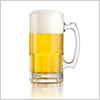Twój koszyk
 Chile & Argentina: Chilean brewer CCU reports third-quarter results largely in line with previous trends
Chile & Argentina: Chilean brewer CCU reports third-quarter results largely in line with previous trends
Compañía Cervecerías Unidas (CCU) reported 3Q25 results, which, although largely in line with previous trends, do show some changes, the Seeking Alpha reported on November 10.
In particular, Argentina suffered a process of depreciation over inflation in Q3, leading to a significant fall in pricing and margins for the international segment. The hope is that, after Argentina's elections, the situation will finally start to improve. In Q4, Chile is going to elections, potentially changing the landscape for consumption as well. Developments in the seasonally super-important Q4 will be relevant.
The company continues to trade at about the same price as when I last wrote about it after 2Q25. I continue to believe an almost 18x P/E (adjusted for certain factors) is not attractive for a name not growing and with structural margin challenges. I maintain a Hold rating.
CCU's results continue to show some structural trends, in particular in the Chile and Wine segments, albeit with the hope of changes in the future, thanks to political and macroeconomic changes in Chile.
On the other hand, the results are much more relevant for Argentina, which showed a change in trend I had been warning against for a long time. In Argentina, the depreciation rate was now faster than inflation, leading to a depreciation of CLP-denominated sales and results. We will potentially see more of this going forward.
On aggregate, the company posted slightly negative sales (-1%), which were driven by volume slightly up (1%), offset by pricing (Argentina depreciation). Gross margins were down, given that inflation is higher than LSD in all countries where CCU operates, plus additional costs in Chile, and EBITDA was up, because of SG&A decreases coming (again) from the Argentine depreciation of costs.
Starting with Chile, the most important segment, the situation was somewhat better. Volumes were down a little and flat for 9M25, driven by lower consumption of alcoholic beverages (mainly beer), offset by soft drinks. The company was able to take pricing, driving sales up 1.8% (4.3pp for 9M25), and even gain a little bit of gross margin.
Pricing at these levels (2pp for 3Q25, 5pp for 9M25) is below or close to MSD inflation in Chile, but the company has been favored by a relatively stable CLPUSD exchange rate, and relatively pressured commodity prices. The main driver of higher costs has been the inclusion of rPET in packaging. During the call, management said that "my #1 commodity is the U.S. dollar", explaining how it drives margins, because most inputs are imported (barley, sugar, PET, aluminum).
EBITDA was up 5pp in Chile, thanks to the margin gains in gross and some efficiencies in SG&A, added to the pricing. Overall, Chile remains pressured on a macro level, with sluggish demand, negative trends in alcohol (especially wine, as we will see below, but also lower night activity because of higher delinquency, as explained in the call). The stabilization in FX has been a good factor versus previous years.
Moving then to International (about 1/3 to 1/4 of EBITDA for the company, including the markets of Argentina, Bolivia, Paraguay, Uruguay, and a JV in Colombia), the situation changed drastically.
The main market in International is Argentina. In previous reports, going back to early 2025, I had explained how Argentina can produce misleading numbers in foreign currency because the country can get very over- or undervalued from time to time. The past two years have shown appreciation of the currency (depreciation < inflation), leading to better results in CLP, despite consistent weak demand and pricing in ARS. The situation has now somewhat changed. Demand and pricing remain weak (pricing is well below inflation, according to the call, and volumes are only MSD up versus the recession year of 2024), but now the FX has become a negative factor in CLP. The country's currency depreciated 40% YoY, with most happening in Q2/Q3, without the company being able to pass that to prices. The result was a loss of 14pp in sales in CLP in Argentina, dragging the International segment (down 9pp) despite volumes being up 5pp (Argentina recovery, but also performing in the smaller markets). The impact on EBITDA was actually positive, as labor and other SG&A costs in Argentina also got depreciated, but if the currency-weakening situation continues (uncertain from here after a victory from the governing party in the recent elections), then this last tailwind in International might disappear. The fundamentals (volume, pricing) remain weak.
Finally, Wines, the smallest and arguably weakest segment, continue to be pressured, mainly because of a secular global trend for lower wine consumption. Volumes fell 3pp for the segment, and 6pp in Chile (a little better in exports). Sales were up because pricing improved in CLP due to a slightly lower FX. Still, gross margins were down 140bps, and EBITDA margins were down 225bps.
Q4 is the most important quarter for CCU on a seasonal basis. It can generate 40/50% of the company's EBITDA, because it includes the spring/summer and holiday season in the Southern Hemisphere (summer shared with Q1).
How Q4 performs in Argentina, after the elections, will be key to understanding if the trends continue in terms of fundamentals (volumes, pricing), and how the FX behaves as a tailwind or headwind.
In Chile, the country will choose its President next week. Although Chilean policy is more moderate, meaning presidential changes do not generate so many waves as its neighbor, this time the country is more mobilized. The new presidency might help spur much-needed growth and especially a pacification of the country, which will probably have effects on the consumption of beverages (especially, as mentioned in the call, for on-premise consumption).
Wstecz





